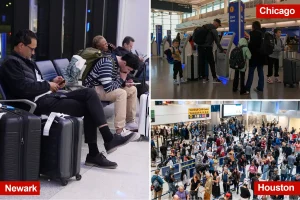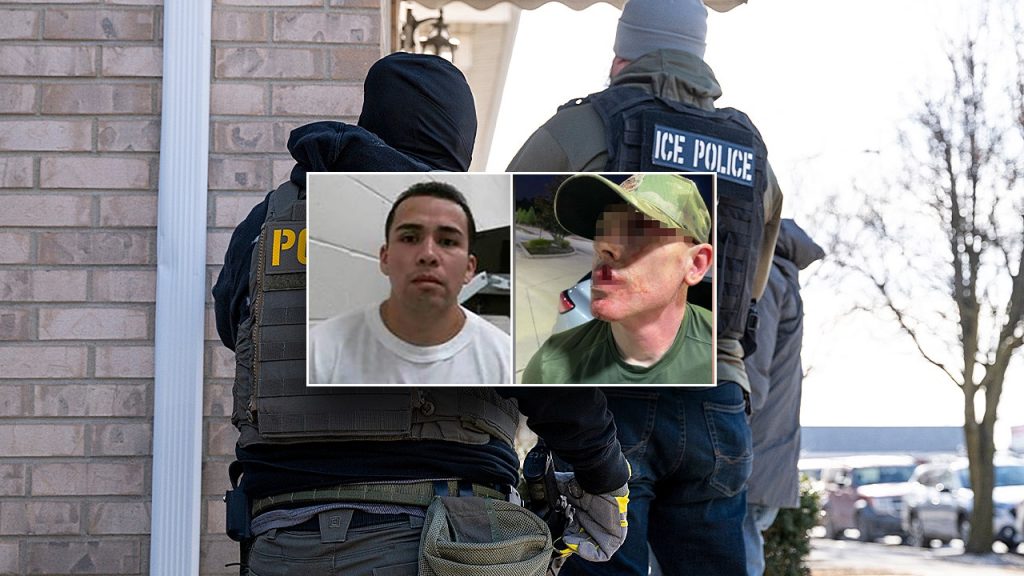ICE Officer Injured While Apprehending Twice-Deported Felon
In a troubling incident that underscores the dangers faced by immigration enforcement personnel, a U.S. Immigration and Customs Enforcement (ICE) officer was seriously injured during an arrest operation in Houston. The officer was violently struck in the face with a metal coffee cup while attempting to apprehend Leonel Perez Rodriguez, a Salvadoran national with a disturbing criminal history. According to the Department of Homeland Security, the attack left the officer with severe burns and a deep facial laceration requiring thirteen stitches—injuries that will likely have lasting physical and emotional impacts. This incident has sparked renewed discussions about the safety of immigration officers and the challenges they face when apprehending individuals with violent backgrounds.
Rodriguez, 33, is no stranger to law enforcement. His criminal record includes a conviction for sexually assaulting a child under 17 years of age, multiple DUI offenses, and repeated illegal entries into the United States. Despite being deported twice—once in 2013 and again in 2020 after serving prison time—Rodriguez had once again returned to the country illegally. Following this latest violent encounter with law enforcement, he now faces additional federal charges for illegal reentry and assaulting a federal officer. The case exemplifies the ongoing challenges within the immigration system regarding individuals who repeatedly return to the U.S. after deportation, particularly those with serious criminal histories.
Houston Field Office Director Bret Bradford expressed frustration over what he described as the “hyper-politicization” of routine law enforcement activities. In a pointed statement, Bradford suggested that misinformation spread by media outlets and organizations opposed to immigration enforcement has emboldened dangerous individuals like Rodriguez to physically resist arrest. “This young officer’s life has forever been altered,” Bradford remarked, highlighting the personal cost paid by the injured officer. His comments reflect growing tension between immigration enforcement agencies and critics who question their methods and priorities, illustrating how the highly charged political environment surrounding immigration policy can have real-world consequences for officers in the field.
The assault comes at a particularly challenging time for ICE, which has been operating during what Department of Homeland Security officials have called “the Democrats’ longest government shutdown in American history.” Despite these constraints, Assistant Secretary Tricia McLaughlin emphasized that ICE personnel have maintained their commitment to protecting American communities. The agency reports that seventy percent of their arrests involve undocumented individuals who have been charged with or convicted of crimes in the United States. This statistic aims to counter narratives that portray ICE operations as indiscriminately targeting immigrant communities, instead highlighting the agency’s focus on public safety concerns.
This incident illuminates the complex human elements at play in immigration enforcement. On one side stands a young officer who, while performing his duty, suffered injuries that may affect him for life. His experience reflects the dangers faced by many in law enforcement who operate in increasingly polarized environments where their actions are constantly scrutinized and sometimes vilified. On the other side is Rodriguez, whose repeated returns to the U.S. despite serious criminal convictions raise questions about the effectiveness of the current immigration system and border security measures. Between them lies a fractured political landscape where immigration policy has become one of the most divisive issues in American public discourse.
As ICE continues its operations nationwide despite political and budgetary challenges, cases like this highlight the multifaceted nature of immigration enforcement. Beyond the headlines and political rhetoric lie real human stories—of officers risking their safety, of communities concerned about both security and humane treatment, and of the complex factors that drive migration despite legal barriers. The injured officer now becomes part of a larger narrative about American immigration policy, one that encompasses debates about public safety, the treatment of immigrants, proper resource allocation for enforcement agencies, and ultimately, what kind of approach best serves both national security interests and humanitarian values. As these discussions continue, the human cost—on all sides—remains a critical yet often overlooked dimension of America’s ongoing immigration debate.










